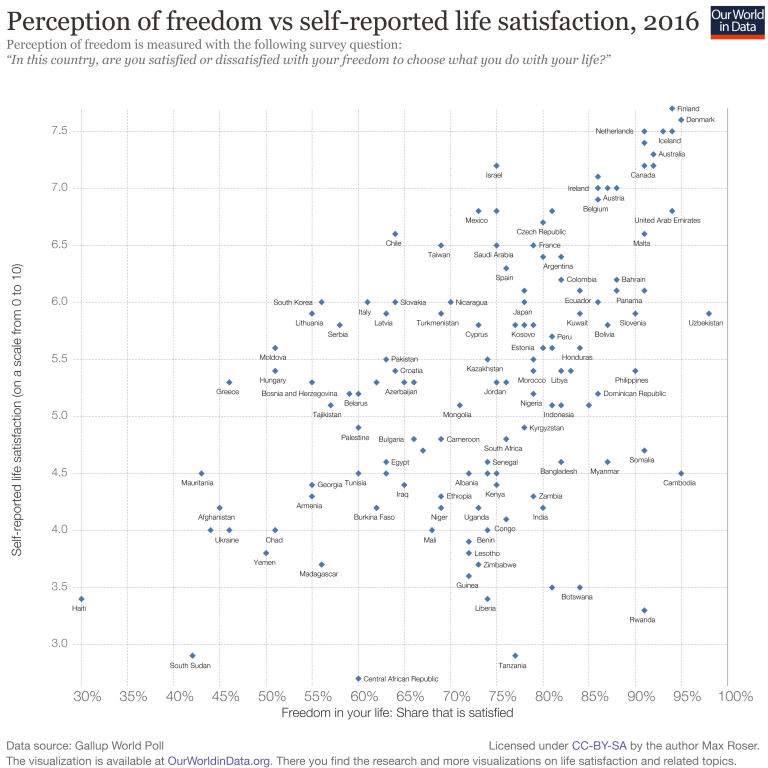"A particular channel through which social environment may affect happiness is freedom: the society we live in may crucially affect the availability of options that we have to shape our own life.
The visualization below shows the relationship between self-reported sense of freedom and self-reported life satisfaction using data from the Gallup World Poll. The variable measuring life satisfaction corresponds to country-level averages of survey responses to the Cantril Ladder question (a 0-10 scale, where 10 is the highest level of life satisfaction); while the variable measuring freedom corresponds to the share of people who agree with the statement "In this country, I am satisfied with my freedom to choose what I do with my life".21
As we can see, there is a clear positive relationship: countries where people feel free to choose and control their lives tend to be countries where people are happier. As Inglehart et al. (2008)22 show, this positive relationship holds even after we control for other factors, such as incomes and strength of religiosity.
Interestingly, this chart also shows that while there are some countries where the perceived sense of freedom is high but average life satisfaction is low (e.g. Rwanda); there are no countries where the perceived sense of freedom is low but average life satisfaction is high (i.e. there are no countries in the top left area of the chart).
To our knowledge there are no rigorous studies exploring the causal mechanisms linking freedom and happiness. However, it seems natural to expect that self-determination and absence of coercion are important components of what people consider a happy and meaningful life."
Tuesday, June 12, 2018
Countries where people feel free to choose and control their lives tend to be countries where people are happier
See Happiness and Life Satisfaction by Esteban Ortiz-Ospina and Max Roser of Our World in Data.
Subscribe to:
Post Comments (Atom)

No comments:
Post a Comment
Note: Only a member of this blog may post a comment.